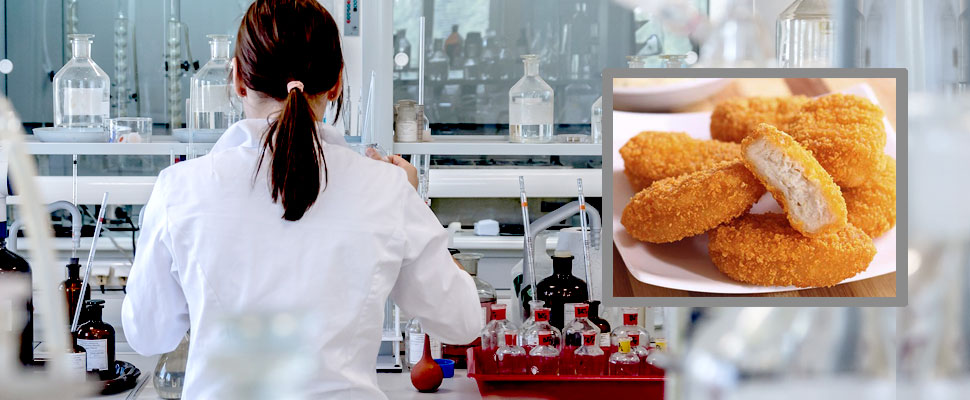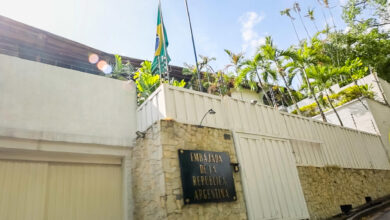Amazing! Would you eat chicken nuggets made of feather cells?
By 2030, the UN's goal is to eradicate hunger through sustainable agricultural practices, technology, and markets. This type of initiatives could help

On October 18, 2018, the BBC tested the chicken nuggets of JUST Company, formally known as Hampton Creek Foods Inc. As described by the media, defines its dining experience as impressive, "the skin was crispy and the meat tasty, although its internal texture was somewhat softer than you would expect from a nugget, for example, from McDonald's or KFC.”
Leer en español: ¡Asombroso! Conoce los nuggets de pollo hechos de células de plumas
However, the news has nothing to do with a new restaurant; chicken nuggets were created from cells of a chicken feather! That .by the way, according to the BBC, was still alive scampering on a farm near the lab.
According to JUST, it takes approximately two days to produce a chicken nugget, through a process of multiplication of the cells, obtained from the chicken feather in a small bioreactor and using a protein. "We do things like eggs, ice cream or butter with plants; and we make meat with meat. You just do not need to kill the animal."
The objective of this new product is to solve the problem of how to feed a growing population without destroying the planet and emphasize that it is not genetically modified chicken nor is it necessary for antibiotics to grow meat.
Famine and sustainability
The United Nations Development Program (UNDP) estimates that about 795 million people suffered from chronic malnutrition in 2014. It also states that the goal is to completely eradicate hunger by 2030, 1 of the 17 Sustainable Development Goals. For this, sustainable agricultural practices, technology, and markets must be promoted. On the other hand, the World Economic Forum (WEF) explains that by 2050 global food systems will need to be sustainable and provide nutritious food to more than 9 billion people!
On the other hand, the WEF states that global food systems have a need to transform to achieve the Sustainable Development Goals by 2030. This requires that food systems are inclusive, sustainable, efficient, nutritional and healthy, he explains. It also identifies the twelve technological applications (the 'Twelve Transformers') that can generate impact for the fulfillment of these objectives.
You may also be interested: Impressive! The cure for HIV could be close
One of these technological applications is the modification of genes for the improvement of seeds of multiple traits. An example of this is the research carried out by the Howard Hughes Medical Institute and the Cold Spring Harbor Laboratory (CSHL), which are editing the genome known as the CRISPR of the tomatillo for its large-scale production, according to the Laboratory. With this, they have managed to design plants that keep stems compact and manageable and also that produce larger and more abundant fruits, up to 50% more.
What estimated impact can these technological applications bring?
These are the benefits according to Forbes:
- If the consumer replaces 10-15% of the meat with alternative proteins by 2030, for example, cultivated meat, 5-10% of the land for agriculture could be used for other purposes, an area larger than Germany.
- If 10-15% of the population uses nutrigenetics for personalized nutrition, it could reduce overweight by up to 55 million people. Only 27 countries in the world, of 204 registered by the UN, have a larger population.
- If 70-90% of farmers use mobile applications by 2030, they could receive up to $ 200 billion in additional revenue
- If 15-25% of farmers adopt precision techniques for the optimization of inputs and water use by 2030, freshwater withdrawals could be reduced by 2-5%, a greater volume of water than Lake Tahoe from the United States
As can be seen, these technological applications not only have an impact on the goal of eradicating hunger by 2030 but also impact each of the sustainable development objectives.
What are the challenges with these technologies?
According to Forbes, the benefits are enormous but cannot be achieved through traditional business models. While some may be largely accepted by the market, others may require greater efforts. For example: in the case of the tomatillo with genetic modification and the cultured flesh of JUST, there may be concerns as documented by the BBC:
- " I like to know where it comes from, which is natural and not processed in a laboratory," says Professor Ashley Pospisil;
- "There's something that scares me in creation by man, we're just causing destruction, I like the idea of God's creation," Linda Hilburn says as she eats a steak.
What is clear, as Forbes states, is that "technological innovations for food systems are still little recognized, but they can be the next big thing in the consumer basket of consumers".
LatinAmerican Post | Victor Manuel Rojas Leal
Translated from: '¡Asombroso! Conoce los nuggets de pollo hechos de células de plumas'
Listen this article





